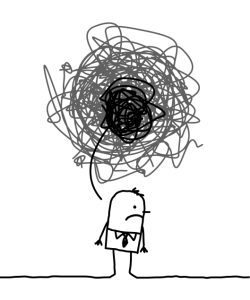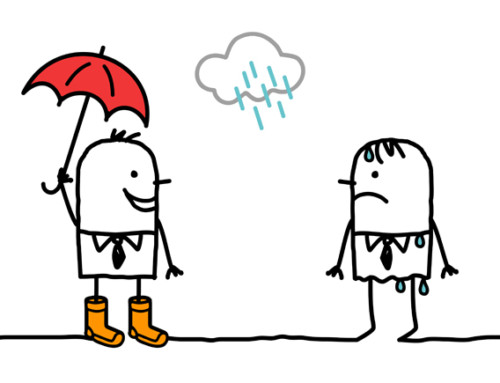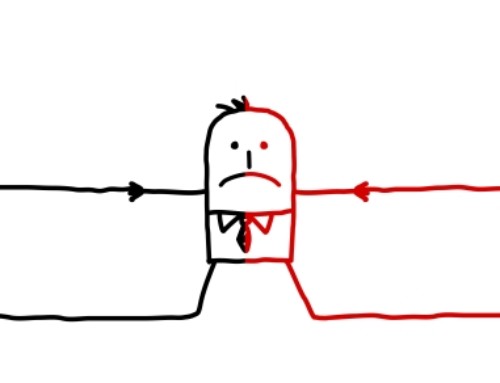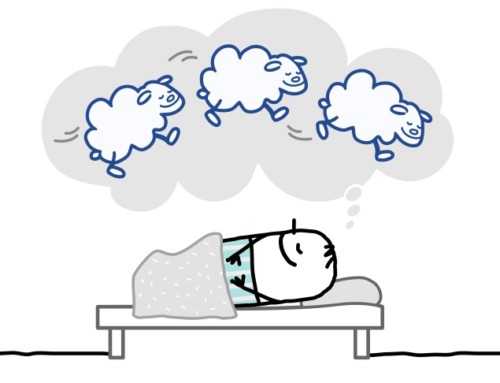In this article, I discuss how putting a negative spin on your random negative automatic thoughts can result in obsessive thoughts.
At a professional workshop I attended recently, the presenter displayed a list entitled ‘Common Unwanted Intrusive Thoughts’. The list included thoughts involving aggression such as ‘killing a loved one’ and ‘hitting someone with a car’ along with thoughts featuring a sexual theme such as ‘engaging in unnatural sexual acts’ and ‘screaming obscenities’.
Given that the focus of the presentation was treating people with obsessive-compulsive disorder (OCD), I had assumed that the list referred to thoughts which were distinctive to people suffering from this disorder. To my surprise, the presenter indicated that the list referred to random thoughts which over 90 per cent of the general population admitted to having. The presenter added with a smile that the remaining 10 per cent of the population who did not admit ever to having these kinds of thoughts were lying.
The presenter’s findings indicate that we all have negative ‘automatic thoughts’ with sexual or aggressive content enter our minds randomly at different times during our days. However, despite all of us being susceptible to such thoughts, people differ in the kinds of thoughts they have in response to these thoughts. In the following sections, I will discuss these different interpretations including one kind of interpretation which fosters the formation of obsessive thoughts in OCD.
Two interpretations of negative automatic thoughts: One leads to molehills, the other to mountains
Most people who have these kinds of negative automatic thoughts accept them as ‘no big deal’ when they enter their minds. They realize that having these thoughts does not reflect negatively on the person having these thoughts. They know that having a random sexual or aggressive thought does not mean that they are overly sexual, aggressive or immoral in their personality. They are also aware that having such thoughts does not in any way indicate that they will act on these thoughts to commit an aggressive or sexual act stemming from them.
People who have this benign interpretation of their negative automatic thoughts benefit from these thoughts having little to no negative impact on their lives including their moods, their self-esteem and their behaviours.
In contrast, a significant minority of people react negatively to their experience of having such negative automatic thoughts. This negative reaction begins with their experiencing negative automatic thoughts about themselves. For example, they may believe that they are immoral for having such thoughts–that having such thoughts necessarily means they are sexually depraved or violent by nature. Even more disturbing to them is the belief that if they have such negative thoughts it means that they are at risk for endangering themselves or others by committing a sexual or an aggressive act.
What was originally a molehill thereby becomes a mountain. That is, viewing random negative automatic thoughts as normal results in their passing away from your mind with no negative consequences. Viewing them as abnormal and disturbing creates problems characteristic of OCD. This includes trying to suppress the thoughts. Unfortunately, thought suppression only serves to make the disturbing thoughts enter one’s mind even more often to the point that they become obsessions.
Viewing your negative automatic thoughts negatively also typically leads to the experience of strong anxiety and various strategies to try to manage this emotional discomfort. This can include avoiding any situations in which you may be prone to having such thoughts. It can also include engaging in time-consuming mental rituals in a vain attempt to ‘undo’ the thoughts and employing behavioural compulsions (such as counting, hand-washing or checking) to cope with the anxiety experienced as a result of the negative view you have toward yourself for having these thoughts. These consequences comprise additional symptoms of OCD which can significantly interfere with your life and the lives of those with whom you interact.
How to turn your mountains back into molehills
Given that obsessive thoughts and accompanying anxiety, thought suppression and compulsive behaviours are the result of viewing negative automatic thoughts as disturbing rather than normal, an important step in addressing OCD is practicing viewing your negative automatic thoughts as normal rather than disturbing. This treatment involves exposing yourself to situations in which such thoughts are likely to enter your mind rather than avoiding these situations. Treatment also entails practicing responding to your negative automatic thoughts by accepting and analyzing them rather than trying to suppress them.
“Exposure and response prevention’, as this treatment is called, takes some time and necessarily involves getting used to experiencing the discomfort you’ve been used to having when you encounter negative automatic thoughts. However, under the guidance of a psychologist specializing in cognitive behavioural therapy (CBT) your discomfort should gradually decrease on a lasting basis as you become comfortable ‘owning’ the negative automatic thoughts which come into your mind. As a Calgary psychologist and a Cochrane psychologist, I use this approach to help my clients in OCD counselling and anxiety counselling.
May you accept your negative automatic thoughts as normal and benign,
Dr. Pat







Leave A Comment